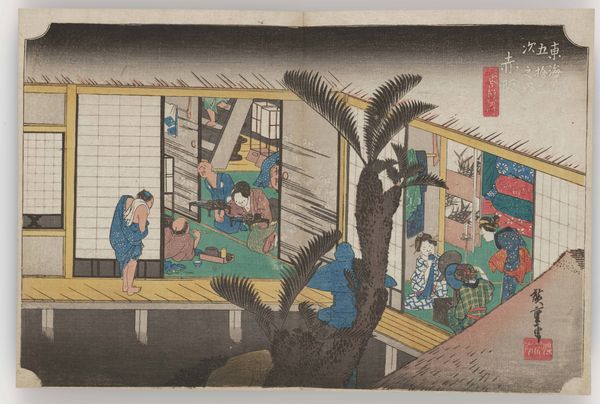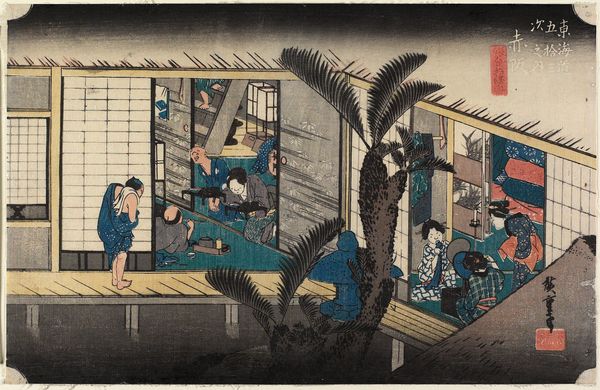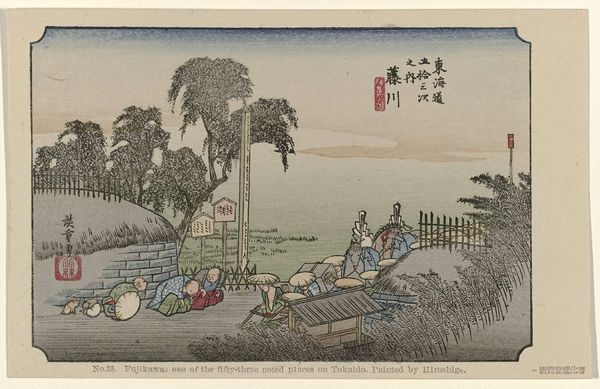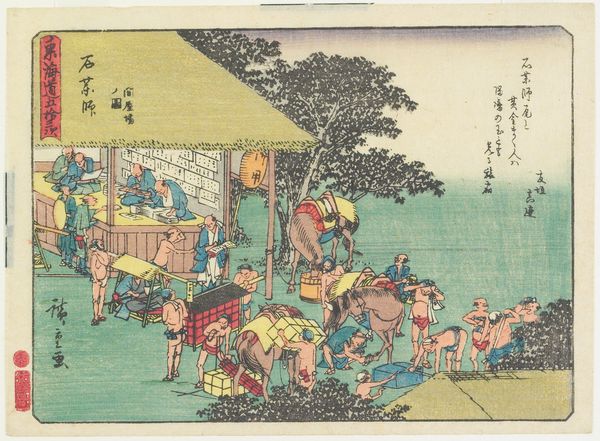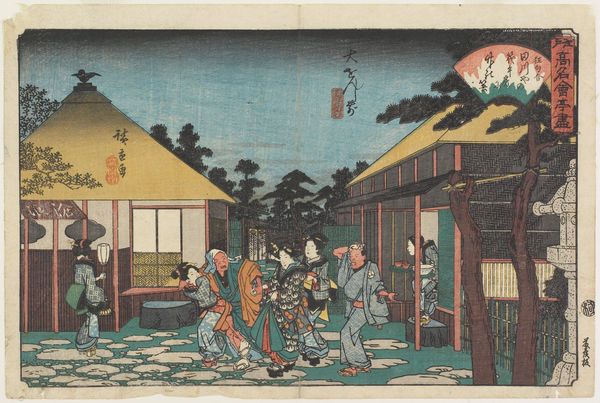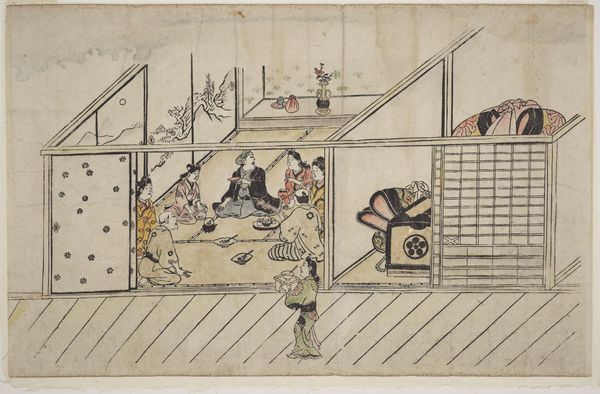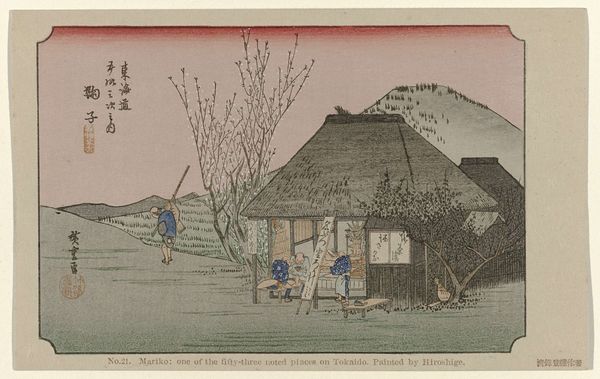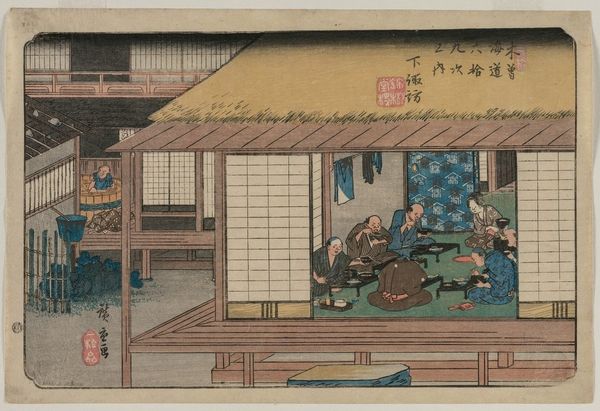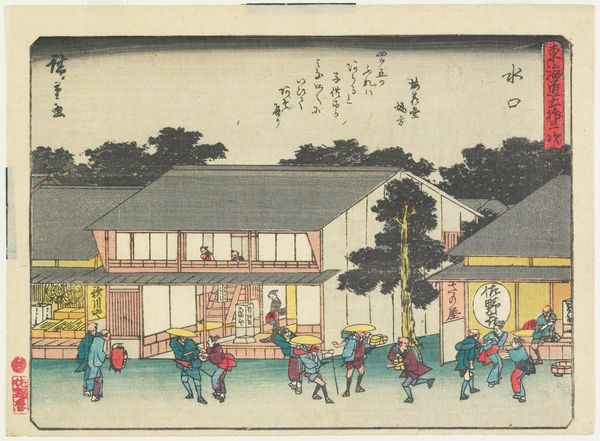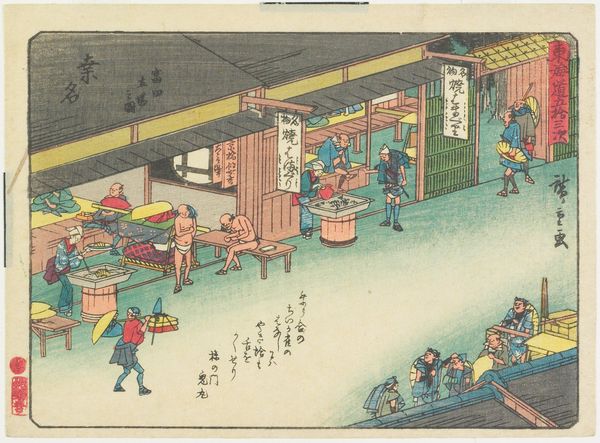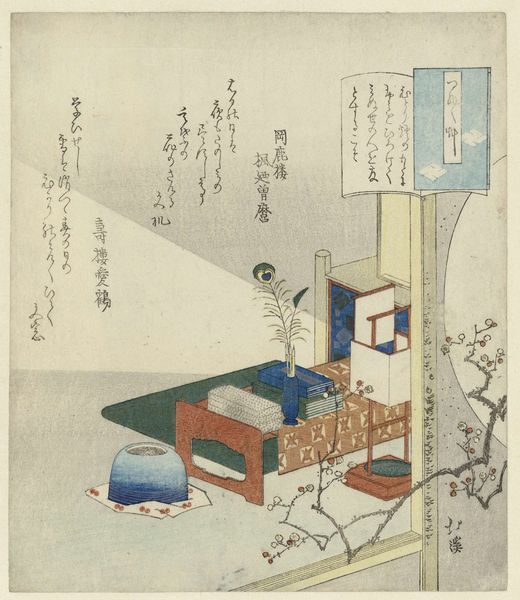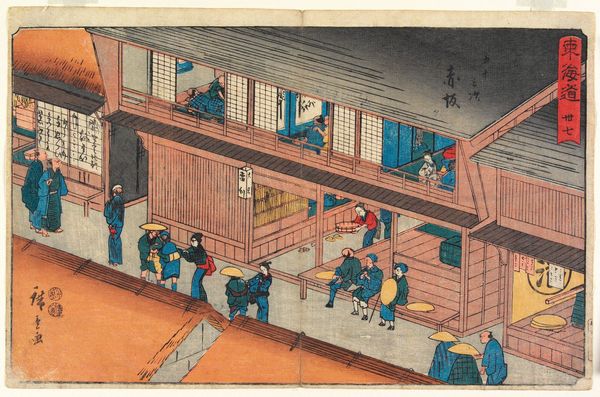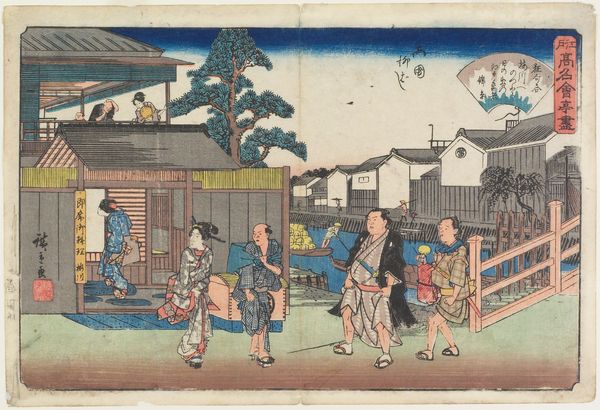
Dimensions: height 90 mm, width 141 mm
Copyright: Rijks Museum: Open Domain
Curator: This is Utagawa Hiroshige's "Akasaka," a woodblock print created in 1906, and now residing at the Rijksmuseum. What are your first impressions? Editor: A scene of intimate domesticity, yet rendered with a surprising level of detachment. The colors are muted, the mood subdued. It feels less like a celebration of everyday life and more like… a removed observation of it. Curator: Hiroshige was deeply invested in capturing the socio-political context of travel and daily existence during the Edo period. It’s critical to remember these prints were often mass-produced, catering to a burgeoning merchant class eager to vicariously experience journeys along the Tokaido Road. They served as commodities for consumption within the cultural and economic hierarchies of the time. Editor: And within that commodification, these prints distill certain enduring cultural symbols of respite and intimacy, the private lives visible here contrasted to the journeys, but of course travel in that era, the Tokaido itself was highly regulated... Did the palm trees in the center have specific meanings? Curator: Absolutely. Palm trees were and are symbolic of the continuation of daily life, almost a constant beat to everyday activity—while journeys might take you away, a familiar place always awaits you with familiar customs. Editor: So we have travelers, weary from the road, finding familiar spaces for rest? The scene, split between distinct rooms but rendered on a single plane, makes me think about privacy. Curator: Consider the gendered spaces within this setting as well. Are the figures primarily male or female? Who is granted visible agency, and how does the architectural layout reinforce societal norms? These aren't passive illustrations; they’re carefully constructed social documents. Editor: The colors, primarily blues and reds, stand in stark contrast. Perhaps intended to subtly signal separate locations of labor or leisure? Almost like the different wings within a theater, providing contrasting settings where human drama plays out... it also prompts thinking on social boundaries. Curator: It serves as a mirror, reflecting our present anxieties about cultural boundaries. It is, however, important to consider both art's enduring emotional impacts and its historical weight in these settings. Editor: This reminds us of how symbolic images continue to operate across cultures and generations; even these small snapshots invite such a breadth of association. Curator: Exactly, it all coexists, these intimate personal symbols together with social significance from past eras still active today.
Comments
No comments
Be the first to comment and join the conversation on the ultimate creative platform.
